


1 Show your dog that you’re tossing a few hot dog slices into an empty wading pool. Toss at least one hot dog close enough to the edge so that your dog can get it without stepping into the pool. Keep encouraging your dog until he has the confidence to step into the empty pool.
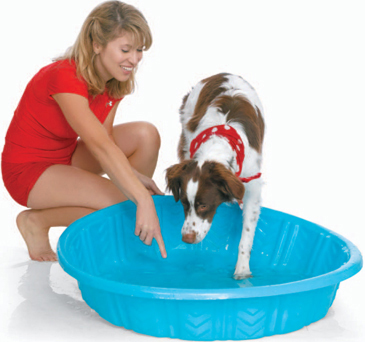
2 Add just an inch of water to the wading pool and repeat the exercise. Praise your dog for any advances he makes. If your dog is reluctant, place the wading pool on a slight slope so that the upper half of the pool is dry.
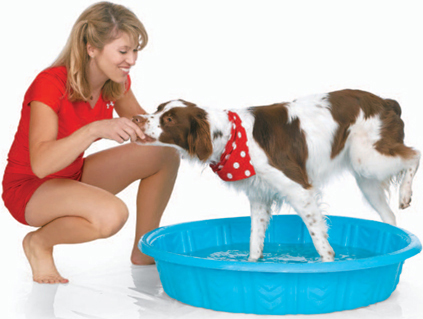
3 Add more water to the pool and encourage your dog to jump in with all four feet! Use a treat in your hand to get him to walk through the water.
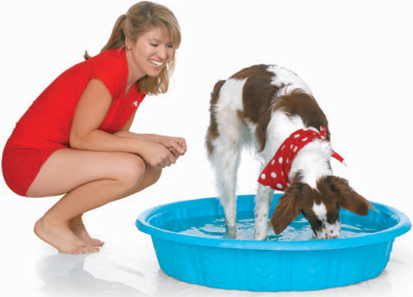
4 Some dogs learn to “dive” for treats and can pick them up from the bottom of the pool. They even blow bubbles from their nose when they submerge their faces.
TIP:
It is important that you don’t push your dog toward a feared object but instead allow him to approach it on his own. Pushing your dog or physically placing him in the wading pool can increase his fear and set training back considerably. Within ten minutes, most dogs are happily sloshing after the hot dogs!
EQUIPMENT:
Use a child’s wading pool, a large water bucket, or even a large bowl for this game.
Hunt in Box of Packing Material

You can’t hide from me!
TIP:
Your dog may be apprehensive at first and reluctant to bury his head in the packing material. Over time he will gain confidence and persistence, and you can bury the item deeper.
EQUIPMENT:
Fill a box with packing material such as nontoxic packing peanuts, wadded-up newspaper balls, or child’s ball-pit balls. Put the treat inside a treat bag or ventilated container to make it a larger target for your dog.
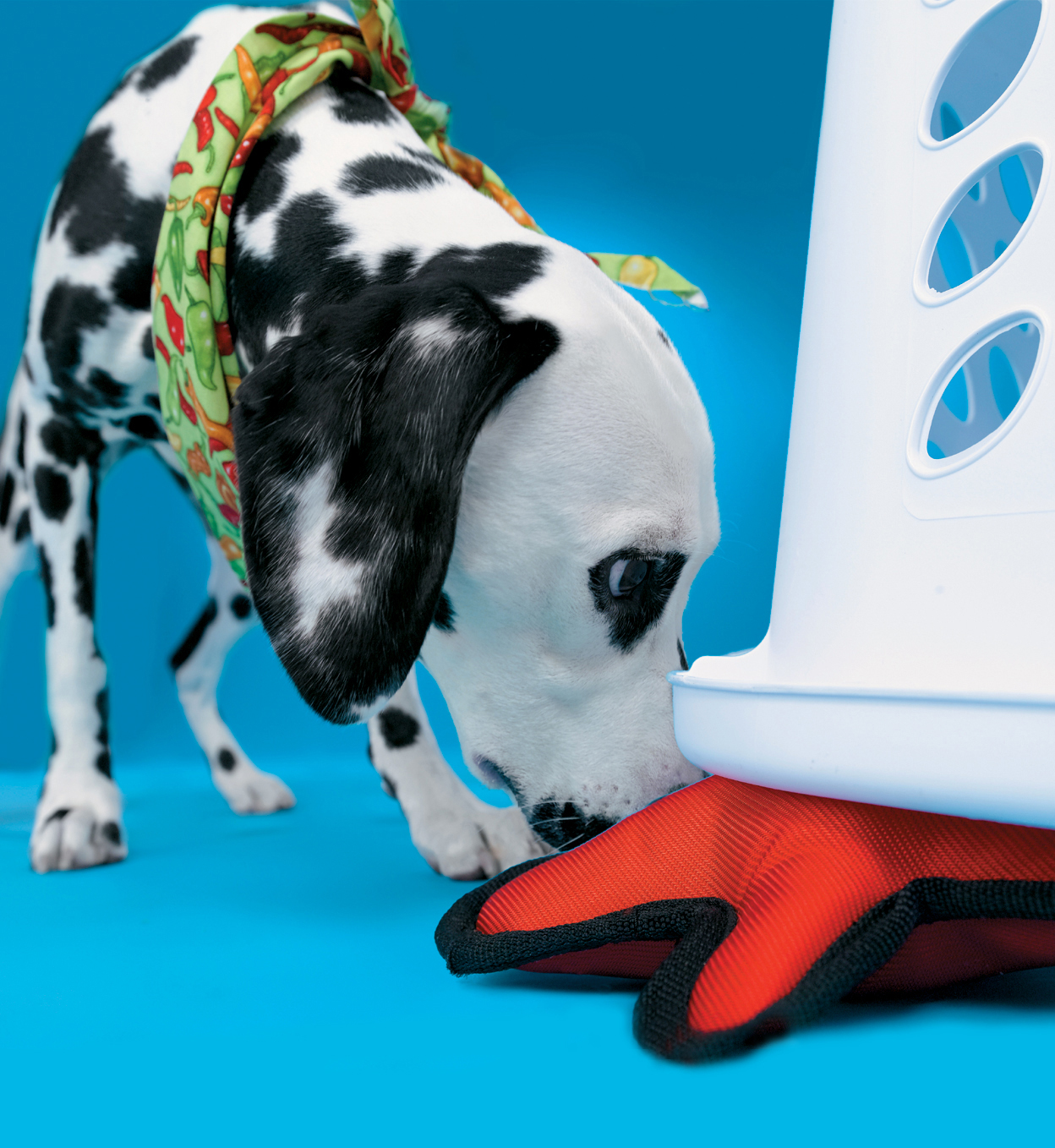
TIP:
Your dog will learn to enjoy this game . . . but only if he experiences success in the beginning stages. You don’t want your dog to give up and walk away, so when he shows interest in the basket by nosing or pawing it, help him by slightly lifting a corner of the basket.
EQUIPMENT:
Use a wire or plastic laundry basket with holes large enough for your dog to see and smell the treat underneath.
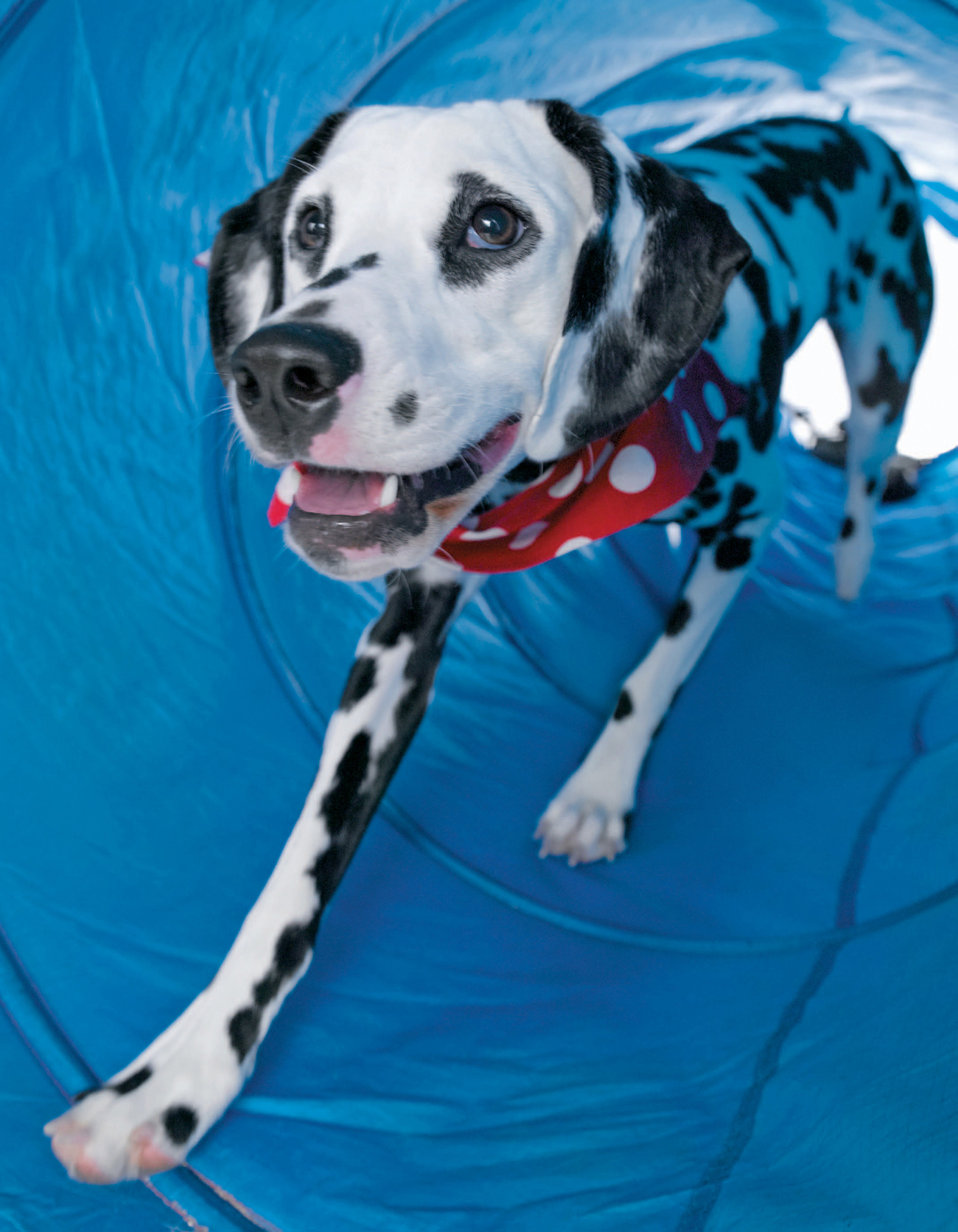

1 Allow your dog time to explore a short, straight tunnel in a familiar area. Have someone hold your dog at one end of the tunnel while you call your dog and make eye contact with him from the other end. Extend a treat into the tunnel to coax him toward you.
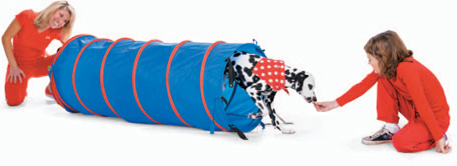
2 It may take several minutes or more of coaxing . . . be patient. When your dog finally goes through the tunnel, give him the treat.
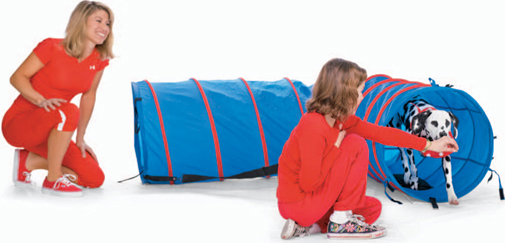
3 Once your dog is confident running through a straight tunnel, try putting a slight bend in it. Don’t be surprised if your dog becomes once again apprehensive. You may need to have him go through a straight tunnel a few times to give him confidence before trying the bent tunnel again.
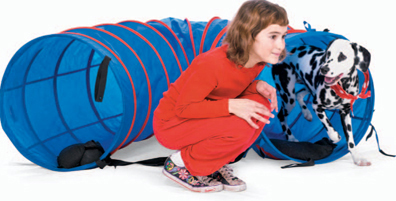
4 Make it even more challenging for your dog by putting a full U-turn bend in the tunnel. Calling to your dog as he runs through the tunnel will let him hear where you are, and give him confidence.
TIP:
Once accustomed to it, most dogs really enjoy running through the tunnel. If you don’t have someone to help hold your dog at the entrance of the tunnel, set the tunnel between a wall and a sofa, or in a doorway, so your dog cannot go around the tunnel.
EQUIPMENT:
Competition agility tunnels are 24 inches (61 cm) in diameter; however, smaller, children’s tunnels can be purchased at a significantly lower price. Use sand bags inside the tunnel to hold it steady.

See how low I can go!

1 Adjust the crawl tunnel ceiling to its highest height. Set it against a wall so that your dog cannot come out the side. Place a line of treats through the tunnel. Bring your dog to the tunnel entrance and point out the first treat to him. Position your body on the side of the tunnel to discourage your dog from coming out the side.
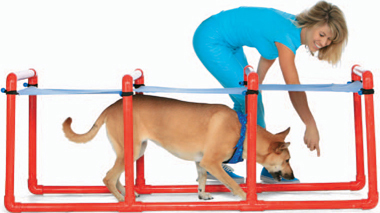
2 After eating the first treat, your dog may back out of the tunnel entrance. Allow him to do so, and simply put another treat in the same spot. Try adding more treats in the tunnel and space them closer together to keep him moving forward. Soon he should be comfortable going all the way through. Repeat the exercise in the opposite direction.
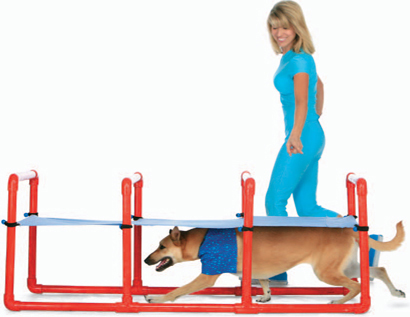
3 Move the tunnel away from the wall and speed your pace as you walk alongside of the tunnel. Lower the ceiling in small increments.
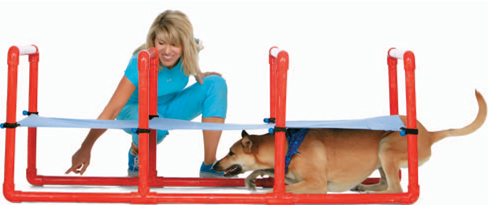
4 Incorporate your cue word, “crawl.” Your dog will be much more willing to crawl on a comfortable surface such as grass or carpet. Crawling is hard work for a dog, so do only a few repetitions.
TIP:
Your dog may be initially fearful of the crawl tunnel, so it is important that you don’t push him past his comfort level, as this could increase his fear. Allow him to maneuver through the tunnel on his own terms and be able to escape when he wants to.
EQUIPMENT:
Agility crawl tunnels are 75 inches (2 m) long by 33 inches (84 cm) wide. You can make a crawl tunnel by extending the legs of a dog ladder (page 68). You can even improvise a crawl tunnel by lining up several sawhorses or chairs for your dog to crawl under.

Look out—I’m comin’ throuuuugh!

1 First, teach your dog to go through an open Tunnel (page 18). Have a helper hold your dog at the chute tunnel entrance. Stand at the exit and lift open the fabric chute so your dog can see all the way through. Call your dog through and give him a treat when he exits.
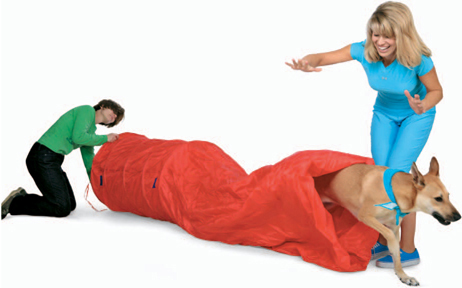
2 Try it again, but this time drop the fabric chute on top of your dog just as he is exiting, so that he gets used to the fabric touching his body.
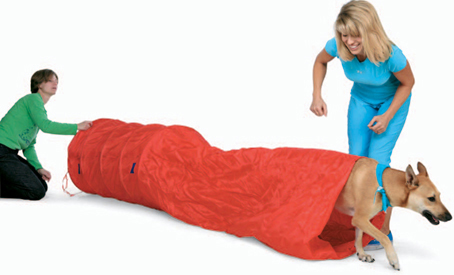
3 Now drop the fabric even sooner, so that your dog has to push his way through the last few feet.
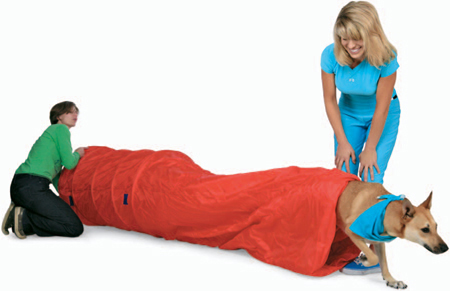
4 Lift up the fabric so your dog can see all the way through, and then drop the fabric back down to the floor. Immediately call your dog through. Congratulate him for his bravery!
TIP:
Straighten the fabric chute before every run so your dog does not get tangled inside. If your dog does get tangled do not grab your dog, but rather lift and expand the opening of the chute.
EQUIPMENT:
Agility chute tunnels come in a variety of qualities and prices. Improvise a chute by attaching a garbage bag to a 55-gallon (208 L) plastic barrel, or by simply draping a blanket over a table for your dog to push through.


1 Hold a treat above the downward end of the bang board and tell your dog, “Paws up!” As your dog reaches for the treat, he may try to step on the board. As soon as a paw comes on the board, say, “Good!” and give him the treat.
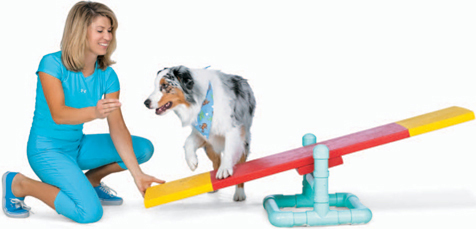
2 Hold the end of the bang board an inch (3 cm) above the ground and repeat the exercise. When your dog steps on the board, allow it to drop to the ground. Your dog may be startled by its movement and noise, so keep your praise happy and encouraging.
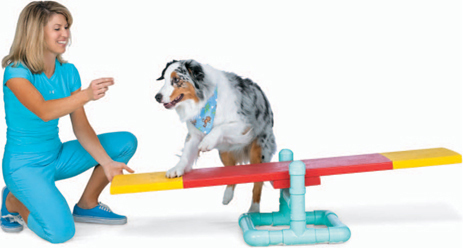
3 Gradually hold the end of the bang board higher. Reward every bang with happy praise and a treat. If your dog seems unsure, go back to putting the board all the way to the ground for a few tries.
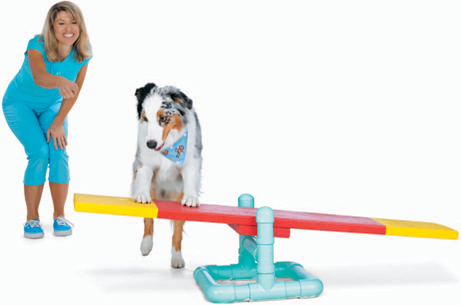
4 Let your dog do it on his own. When your dog starts his agility training, he will already be desensitized to the scary bang of the seesaw obstacle.
TIP:
Counterconditioning is a technique that pairs a reward (treat) with a feared object (the loud bang) to overcome the fear. Be cognizant of your dog’s anxiety level and work below his fear threshold. If your dog is crouching, reluctant to approach the bang board, or does not take your food treat, then he is over that threshold.
EQUIPMENT:
Bang boards look like mini seesaws. You can also use a full sized seesaw (page 88) or wobble board (page 94) as your “bang” object.

I slam doors all the time. I like to help.

1 Start with a door that is already closed. Hold a treat to your dog’s nose to get him interested.
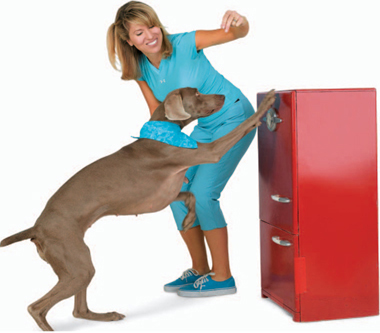
2 Slowly move the treat toward the door, and up to a height that is just out of your dog’s reach. In an attempt to get the treat, your dog will put his front paws on the door. At that instant, say, “Good!” and give him the treat.
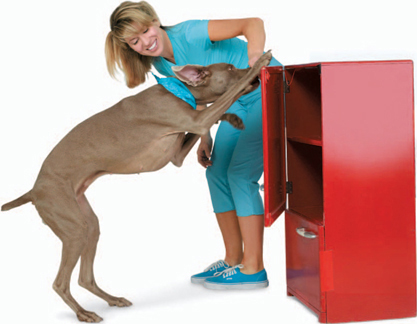
3 Open the door a few inches and repeat the exercise. When your dog puts his paws on the door, the door will slam, which may startle your dog. As quickly as possible after the slam, get that treat into your dog’s mouth.
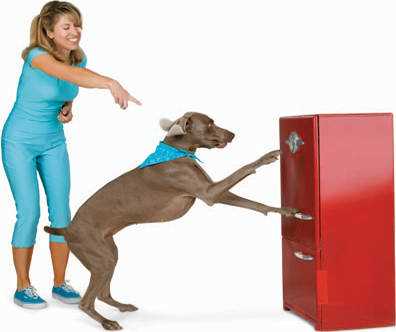
4 Repeat the exercise, opening the door wider as your dog gains confidence. Soon, your dog will be excitedly jumping against the door to make it slam!
TIP:
A sound-shy dog will startle at the loud slamming sound, so it is important to increase the noise level gradually. Be cognizant of your dog’s anxiety level. If he is reluctant to approach the door, go back to practicing with a closed door.
EQUIPMENT:
Use a door for larger dogs, and a kitchen cabinet for small dogs.

I’m gonna be in the circus some day!

1 Hold the hoop across a doorway so that your dog will not be able to go around the hoop. Give your dog some time to investigate the hoop, as he may be scared of it at first.
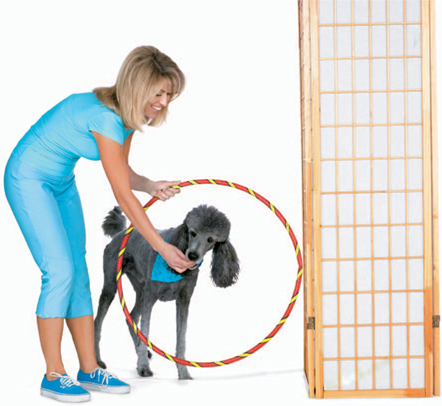
2 Use the hand closer to your dog to hold the hoop. In your other hand, hold a treat and lure your dog through the hoop. Let him have the treat once he goes through.
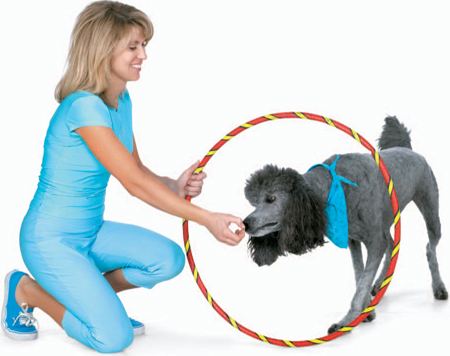
3 Now try it in an open room. Hold the hoop on the ground using the hand closer to your dog. Say, “Hup!” and lure him through with a treat in your other hand.
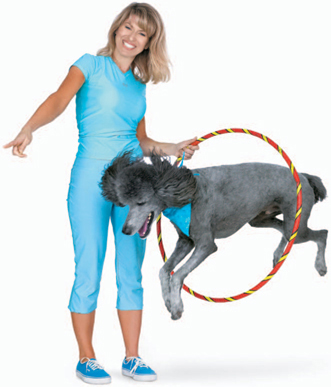
4 Raise the hoop off the floor. Use the hand opposite your dog to wave energetically. If your dog gets tangled in the hoop, be ready to release it.
TIP:
Dogs can be frightened to go through the hoop for the first time. Allow your dog to make the decision to go through on his own, without forcing him.
EQUIPMENT:
Remove the noisy beads from inside a toy hoop, as they may frighten your dog. Or make your own hoop from black PVC irrigation tubing and tubing connectors (sold at home improvement stores).

When my dad opens the door, he says “release the hounds!”

1 Set up two adjoining platforms. Have your dog “step up” onto the first platform (see Pedestal, page 136). Use a treat to lure him onto the second platform. Give him the treat when he reaches the second platform.
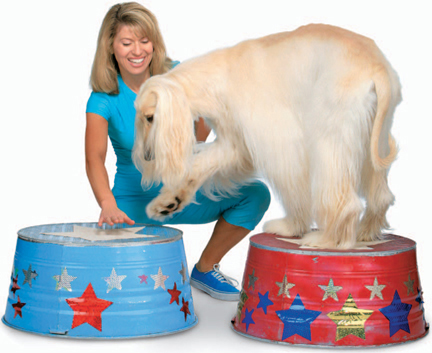
2 Separate the platforms by about 6 inches (15 cm) and try it again. Instead of luring your dog to the second platform, try saying, “Hup!” and patting it.
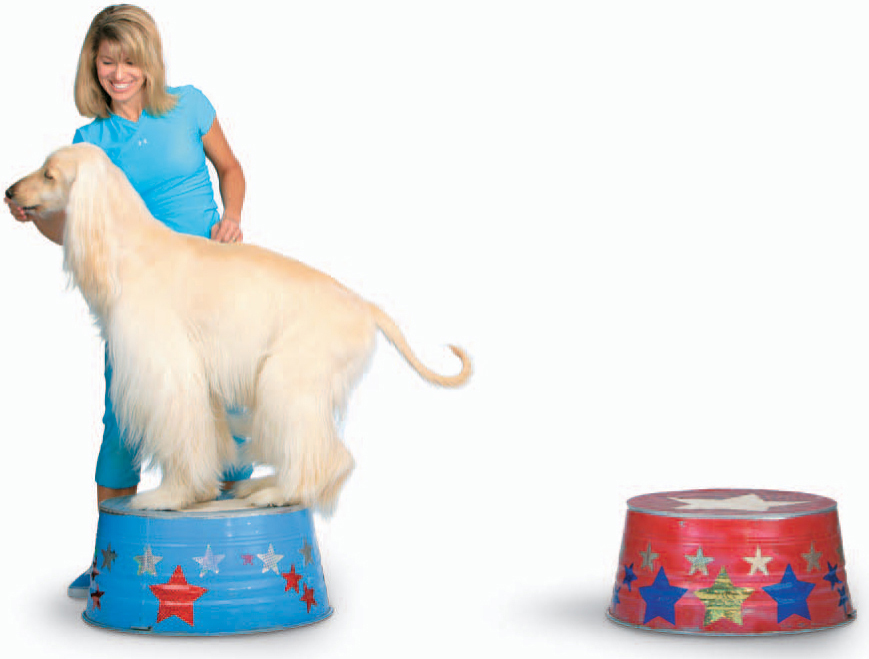
3 Gradually separate the platforms so that your dog is jumping farther distances. Always reward your dog on the second platform.
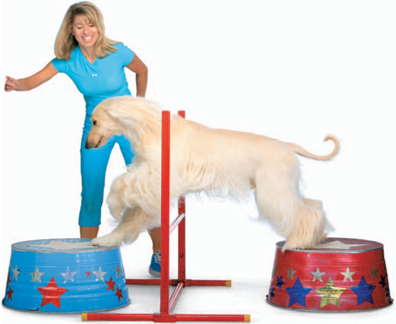
4 If your dog jumps to the ground instead of the second platform, place a bar jump or hoop between the two platforms.
TIP:
A bad experience with a jump can decrease your dog’s confidence, so increase the distances very slowly, and only when you are sure your dog feels confident.
EQUIPMENT:
Platforms should be sturdy with good traction, and large enough to provide adequate landing space for your dog (the farther apart the platforms, the larger the platforms will need to be). There is always the possibility that your dog will fall short on his jump, so use platforms low enough that your dog will not get hurt if he falls short (approximately half of the height of your dog).
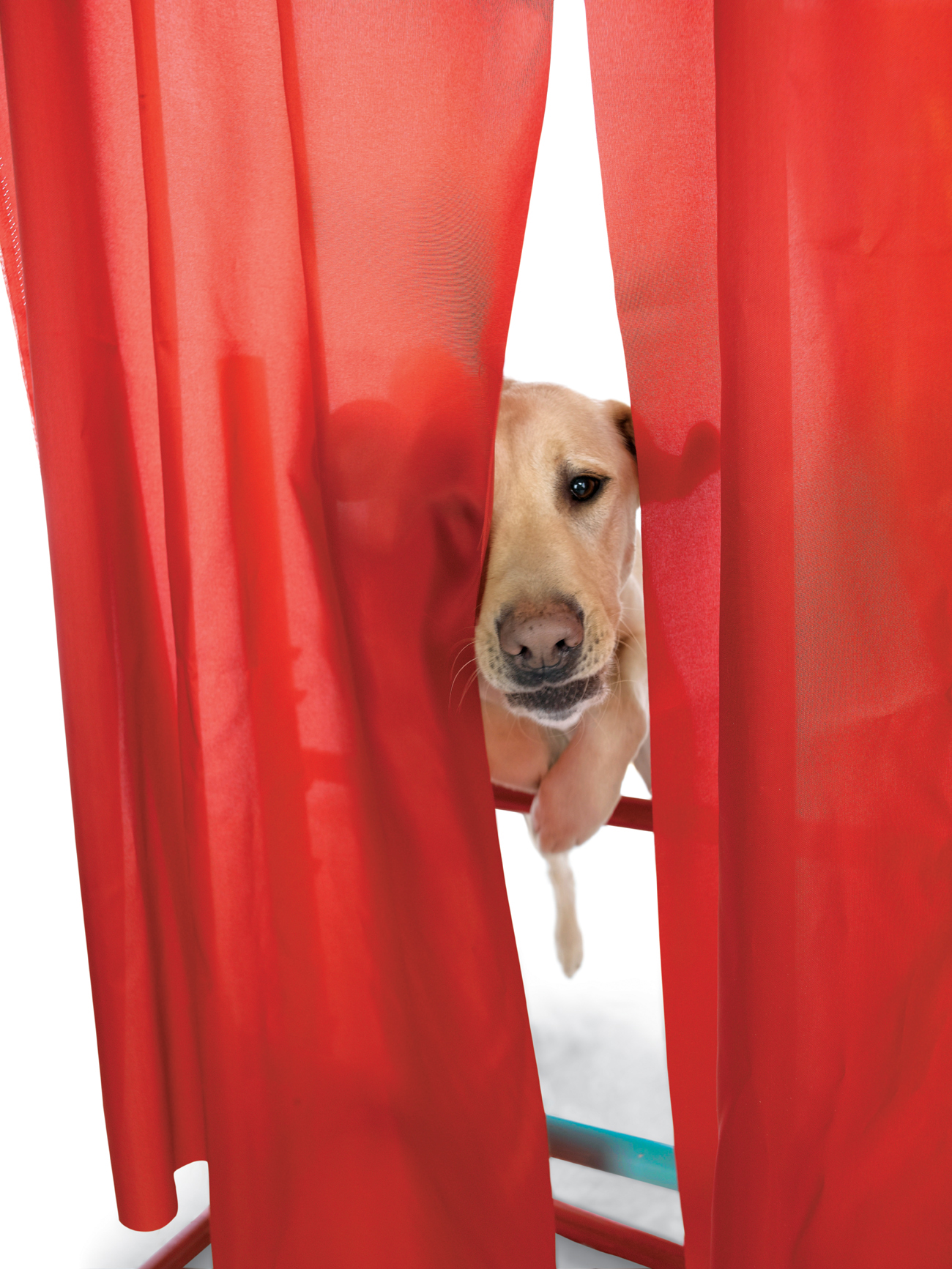
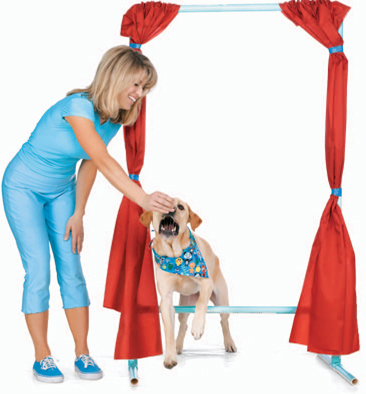
1 First, teach your dog a Bar Jump (page 104). Open the curtains on your blind jump all the way and tie them to the sides of the frame so they don’t move in the breeze. Use a treat to lure your dog through the frame.
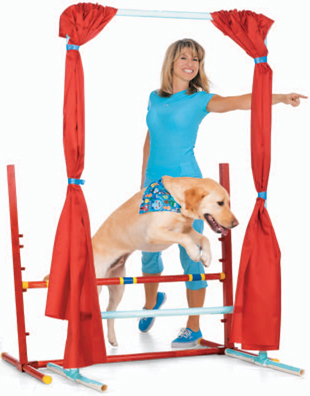
2 Set up a low bar jump directly in front of your blind jump, and have your dog jump over the bar and through the blind jump frame.
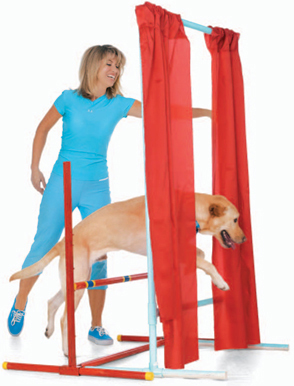
3 Untie the curtains, but keep them open. Have your dog jump over the bar and through the blind jump. After each jump, close the curtains a little more.
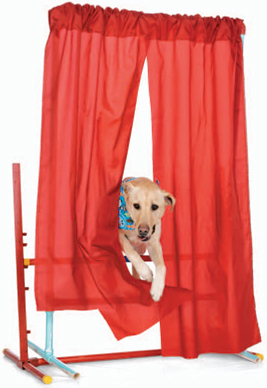
4 Finally, close the curtains all the way. There should still be a small sliver of an opening so that your dog knows where to jump.
TIP:
Work each step of this exercise and don’t progress too fast. Mastering this skill will lead to a more confident dog.
EQUIPMENT:
Construct a PVC plastic pipe frame for your blind jump. Attach a split curtain made from lightweight fabric. Improvise a blind jump by simply attaching fabric or newspaper to a large hoop.